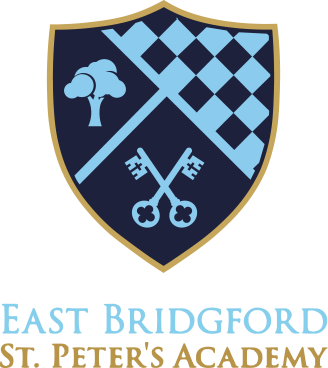Design and Technology
"Design is not just what it looks like and feels like.
Design is how it works." - Steve Jobs
What do we want our DT curriculum to achieve?
At St Peter’s we strive for children to design and make creative things; test and make changes; solve problems with a purpose and aim to add value to the real world.
We aim for design technology to be challenging in the pursuit of developing (original) ideas; not to just copy something but put their own creative (take care) stamp on the things they design. We strive for children to be able to test and make changes in a step-by-step process – thinking about how to solve problems for a powerful authentic design with a real purpose.
At St Peter’s we want to instil a love of food and open the door to one of the greatest expressions of human creativity. Learning to cook and appreciate food is a crucial life skill that enables pupils to feed themselves and others affordably and well, now and in later life. Our motto (in the hall) is, ‘Eat better, do better’ – we want all children to learn about food in a fun and engaging way, as a healthy balance of nutrition and exercise leading to excellence.
By carefully planning the design technology curriculum, our intention is for all children to enjoy and participate in a wide variety of design technology projects so design technology can inspire future chefs, engineers, architects and designers. The stories behind both inventions and everyday objects will both provide a wider landscape for pupils to inform their design technology work and support reading, talking and writing.
Why is DT important to us?
We live in a world shaped by design and technology. Teaching DT equips children with the mindset and skills to understand, navigate, and contribute to technological advancements. It lays the foundation for essential 21st-century skills and encourages a mindset of curiosity, perseverance and capability.
DT is not just about making things - it's about thinking, planning, creating, testing and improving. DT encourages children to think creatively to solve real-world problems and nurtures the ability to design, prototype and refine ideas - key skills in many fields, from engineering to entrepreneurship. When children are given challenges in DT, they learn to logically plan, test and adapt their designs and gain hands-on experience with measuring, cutting, joining and assembling - skills that are useful in everyday life. DT integrates knowledge from subjects like maths and science and often involves them in collaborative tasks that develop their ability to share ideas, listen to others and work as a team. Creating something tangible in a take-care way gives children a strong sense of achievement and adds to their profound personal development, which is central to our core purpose at St. Peter's.
How do we develop knowledge and skills in DT?
Our design and technology lessons are carefully sequenced to enable children to build upon their DT knowledge as they progress. At each stage, children are immersed in rich DT vocabulary that is taught discretely, built upon progressively and revisited regularly. The learning activities also develop the children’s practical skills in line with the National Curriculum. Specifically, the children will be supported to plan, design and create projects, select appropriate materials and tools, measure and assemble components, test and refine their work and communicate their design process and outcomes. As children’s knowledge and understanding increases, they develop a growing ability to draw conclusions based on real evidence and user feedback. Throughout our teaching, we encourage children to ‘think like a designer’ by developing their creativity, problem-solving skills and willingness to adapt their ideas in light of new insights.
Children develop and build their knowledge in five key areas:
- Cooking and nutrition
- Mechanisms
- Structures
- Textiles
- Electrical Systems
How do we use assessment in DT?
Because DT is a practical, creative subject, we assess both the process and product of learning. By evaluating children's understanding and progress in key concepts, we can guide future teaching and help them to reflect on their learning. DT knowledge and skills are often observed 'in the moment' and assessments are made through ongoing discussions and focused tasks, both practical and written. In this way, misconceptions can often be identified and corrected as they arise. Teachers have planned carefully the skills and knowledge they want the children to acquire by the end of the project and children are assessed against key questions in their written, verbal and creative responses.
How do we include and challenge all children in DT?
It is essential that all our children access and learn effectively in our DT lessons across school. This involves setting suitable, open-ended learning challenges, responding to children's diverse needs and overcoming potential barriers to learning and assessment for individuals and groups. Teachers use a range of adaptive strategies, e.g. modelled demonstrations, visual aids and simplified instructions, and utilise specific adaptations and scaffolds for DT to meet the needs of all our children. We use word banks and images to support children’s understanding and learning, as well as pre-teaching key vocabulary. Repetition and reinforcement help pupils with SEND retain key concepts in the long term, achieved through retrieval activities. Projects explore designs, food and technology from different cultures and countries to broaden their understanding and show respect for diversity and explore sustainable practices across the world. In classrooms where all ideas are welcomed and mistakes are seen as part of learning, our children start to develop and understand how to take care.
